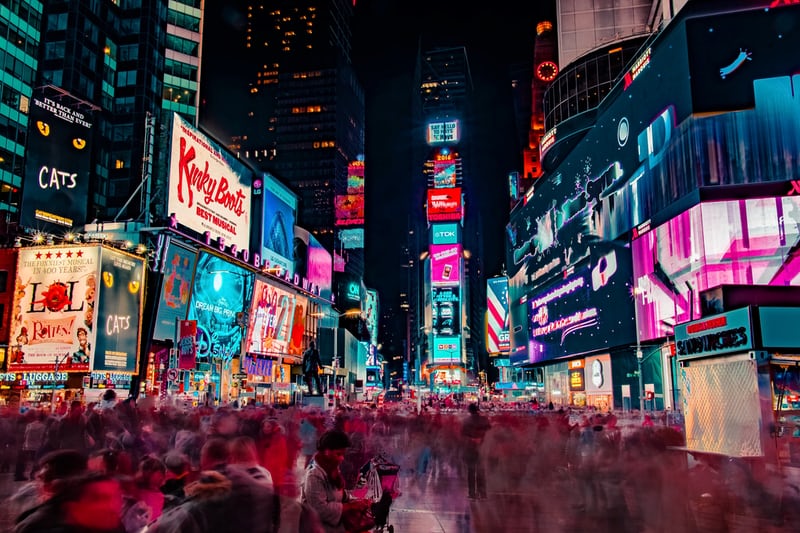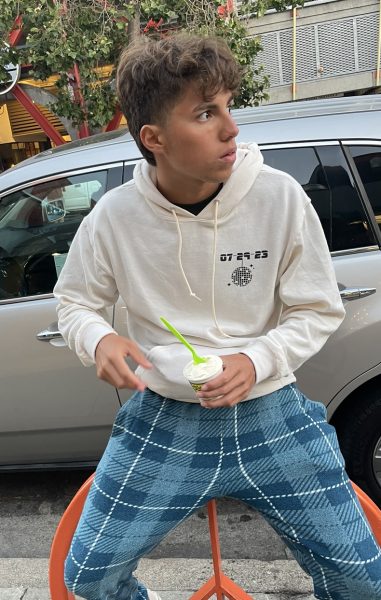The Evolution of Streetwear Style
Streetwear, a new era of fashion, and its rise to popularity.
September 2, 2021
Streetwear is a style of casual clothing that became global in the 1990s. Born out of the New York Hip-hop scene, streetwear evolved with elements of Californian and Japanese fashion. Streetwear brands borrowed heavily from punk, surf, and skate culture. Today, streetwear is considered a movement of the people. It is something that is always evolving according to the external influences of popular culture and subculture. The evolution of streetwear is a timeline of brands, designers, musicians, and other big names inspiring and influencing each other’s work.
1980 Stüssy:
In the late ’80s and early ’90s, the Southern California surf scene created a brand that swept through the clothing landscape, redefining casualwear. That brand was Stüssy—a label created by surfer Shawn Stüssy, growing from youth movements and revolutionized the fashion industry. Stüssy began screening t-shirts and shorts with his surname in a graffiti-influenced hand style which later became the infamous company logo. Stüssy inadvertently fell into the clothing business and in a few short years set up his first small showrooms in California and New York. The brand grew during the late ‘90s with designs and overall aesthetics touching on a range of references from underground subcultures. These designs appealed to a worldwide network of creative youth who were into surfing, skating, and music.
1993 Nigo’s A Bathing Ape:
While streetwear became global and the United States was in front of it all, Japan was the next hotspot for up-and-coming fashion designers ready to bring a new style to the streetwear scene. At this time Nigo (born Tomoaki Nagoa), was a devout hip-hop addict who had been accepted to the seminal Bunka Fashion college. While he didn’t attend any classes, he was influenced by Tokyo’s nightclubs where he found himself making connections that would further his fashion career. Tomoaki later remarked that he learned nothing from Bunka, but that the most important thing that happened to him while attending the school was meeting legendary designer Jun Takahashi. It was at this time that a young Tomoaki met another legendary Japanese designer, Hiroshi Fujiwara, who founded Fragment Design.
It was because of Fujiwara that Nigo earned his infamous nickname “Nigo”, which translates to “number two” referencing the similarities between the two. With Fuijiwara’s help, Nigo and Takashi founded Nowhere, a fashion boutique that sold a selection of international streetwear brands. Nigo created Bape during this time. Bape, originally named A Bathing Ape, was a streetwear brand that drew inspiration from the 1968 film A Planet the Apes and references the Japanese colloquialism mocking the opulence of post-war. In a short amount of time, Bape began to dominate the streetwear scene. In response, Nigo opened Bape cafes, studios, and restaurants flooded with their products. In spite of the unyielding popularity of Bape, however, they were losing more money than they were making. Ultimately, Nigo made the decision to sell Bape, saving the company and himself from bankruptcy. Still, like Shawn Stüssy before him, Nigo left a huge footprint on the fashion industry after creating a new brand and style that took on a life of its own.
2000’s Nike Collaborations:
In 2000, streetwear entered the sneaker industry, ascending a level in fashion. At the time, Stüssy was the biggest name in streetwear and Nike was the biggest name in the sneaker industry, making Stussy’s Mike Koppeling interested in a collaboration. When he contacted Nike’s Fraser Cooke about a possible collaboration between the two, it started an ongoing tradition that changed everything. In 2001, Stüssy released a Dunk collaboration that marked the beginning of the “sneakerhead.” Nike finally had a hold of the streetwear scene and followed its Stüssy collaboration with collaberations with Supreme and Diamond Supply Co. These collaborations fueled the sneaker-head craze which caused chaos in sneaker releases with violence, traffic, vandalization, and theft simply to get a pair of the latest drop.
2010s Celebrity Co-signs:
In the 2010’s, streetwear culture peaked in popularity thanks to co-signs from big-name celebrities. Most notably, ASAP MOB, an American Hip-Hop collective formed in Harlem, New York. Group member ASAP Rocky had risen to the face of hip hop fashion, following Pharell and Kanye. He influenced a new generation with one single line in his first mainstream song “Peso”, singing, “Raff Simons, Rick Owens usually what I’m dressed in.” Rocky’s single line brings a new style to the scene by mixing streetwear with designer fashion with streetwear. In a short amount of time, ASAP MOB led a new generation of streetwear, raising the profiles of brands Pyrex, Blvck Svcle, Palace, and other iconic streetwear brands. Rocky also developed authentic relationships with designer titans like Jeremy Scott, Alexander Wang, Rick Owens, and Raff Simons.
Unlike Rocky, group member ASAP Bari was not a rapper and at the time, had a small cult following behind him. However, due to his love for fashion, Bari’s persona grew into his own brand. In the following years, Bari created Vlone, a fashion brand that means “live alone and be alone”. At first, Vlone was only worn by the group and close friends, but due to the public demand, Bari released his first line of Vlone to the public. In the next year’s, Vlone made its debut in Paris Fashion Week and in the sneaker industry, collaborating with Nike. Later, ASAP affiliate Ian Conor — a true talent in his own right — went on to promote the grunge-meets-streetwear look into mainstream fashion. As of today, the ASAP Worldwide movement has slowed down, but their influence on the industry is responsible for streetwear now being considered designer fashion.
Currently, the streetwear scene is still thriving, and although fashion designer Virgil Abloh said it is “definitely going to die” and that “It’s time is up”, streetwear appears to be here to stay. Today, small businesses and unique brands are the new wave in the streetwear scene, representing the beginning of a new era of streetwear.


